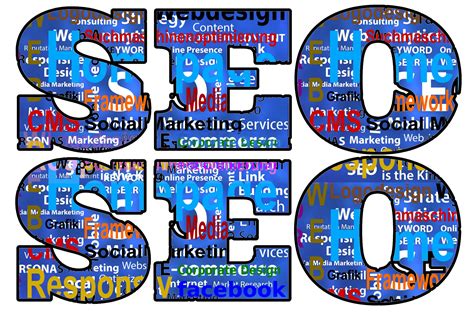The Digital Battlefield: Mastering Search Engine Optimization
In the vast expanse of the internet, visibility is the currency of success. Search Engine Optimization (SEO) is not merely an option for online businesses; it is the fundamental engine driving organic traffic, building authority, and ultimately, maximizing revenue, particularly through mechanisms like Google AdSense. Effective SEO transforms a dormant website into a magnet for targeted visitors, ensuring that when potential customers search for solutions, your content is the authoritative answer they find first.
However, the world of SEO is dynamic, dominated by the ever-evolving algorithms of search giants, primarily Google. What worked last year may be irrelevant today. True SEO success requires a holistic, multi-faceted approach—a comprehensive Optimization Suite—that addresses all critical elements: Technical Foundations, On-Page Excellence, Off-Page Authority, and the crucial factor of User Experience (UX). This ultimate guide breaks down the essential components and advanced strategies necessary to achieve top search rankings and sustain long-term digital growth.
Pillar I: Technical SEO Foundations
Technical SEO focuses on the elements that dictate how efficiently search engine spiders (crawlers) can access, crawl, and index your website. Without a solid technical base, even the most brilliant content will remain invisible.
A. Site Speed and Core Web Vitals
Google has emphatically stated that page speed is a critical ranking factor, underpinned by the Core Web Vitals (CWV) metrics. Optimizing these factors is non-negotiable for competitive ranking.
A. Largest Contentful Paint (LCP): Measures perceived load speed by marking the time at which the largest element in the viewport has rendered. Optimization involves reducing server response time and utilizing fast Content Delivery Networks (CDNs).
B. First Input Delay (FID): Measures responsiveness by quantifying the time from when a user first interacts with a page (e.g., clicking a link) to the time the browser is able to begin processing that interaction. Optimization focuses on minimizing JavaScript execution time. (Note: FID is being replaced by Interaction to Next Paint (INP)).
C. Cumulative Layout Shift (CLS): Measures visual stability. A low CLS score indicates that page elements (images, ads) do not jump around while the page is loading, preventing frustrating user experiences.
B. Crawlability and Indexation
Search engines must be able to discover and understand every valuable page on your site.
A. XML Sitemaps: Providing a map that lists all important URLs on your site, helping search engines prioritize pages for crawling. This map should be regularly updated and submitted via Google Search Console.
B. Robots.txt File: A text file placed in the root directory that instructs search engine robots which parts of your site they should or should not crawl. Using this correctly prevents wasting crawl budget on low-value pages.
C. Canonical Tags: Essential for preventing duplicate content issues. This tag tells search engines the preferred version of a URL when identical or near-identical content exists on multiple URLs.
D. Structured Data (Schema Markup): Using specific vocabularies (like Schema.org) to tag elements on your page (e.g., reviews, recipes, FAQs) to help search engines understand the context of your content and potentially earn Rich Snippets in the SERP.
C. Mobile-First Indexing
Since 2021, Google predominantly uses the mobile version of a website for indexing and ranking.
A. Responsive Design: Ensuring your website uses responsive web design principles so content automatically adjusts to the user’s screen size, providing a consistent experience across all devices.
B. Mobile Site Speed: Recognizing that mobile users often have slower connections, prioritizing the optimization of images and code specific to mobile viewports.
Pillar II: On-Page Content Excellence
On-Page SEO is about optimizing the content and HTML source code of a page to rank for specific keywords. This is where user intent and keyword strategy intersect.
A. Keyword Research and Intent Mapping
Modern SEO is driven by user intent, not just keyword density.
A. Identifying High-Value Keywords: Focusing on long-tail keywords (longer, more specific phrases) that have a lower competition and a clearer buying or informational intent.
B. Analyzing Search Intent: Categorizing keywords into Informational (e.g., “how to do SEO”), Navigational (e.g., “Google Search Console login”), Transactional (e.g., “buy best SEO tool”), and Commercial Investigation (e.g., “SEO software reviews”). Content must match the intent.
C. Semantic SEO: Optimizing content for topic authority rather than single keywords, using related terms, synonyms, and entities (LSI keywords) to cover a subject comprehensively.
B. Content and HTML Optimization
Every element on the page must be strategically optimized to signal relevance to search engines.
A. Title Tags and Meta Descriptions: Crafting compelling, unique, and keyword-rich Title Tags (the headline displayed in the SERP) and Meta Descriptions (the summary snippet). The goal is to maximize the Click-Through Rate (CTR).
B. Header Tags Hierarchy (H1, H2, H3…): Using a logical structure where the H1 is the main topic title, and H2s and H3s break the article into sub-sections. This improves readability for both users and crawlers.
C. Image Optimization: Compressing images for speed and using descriptive Alt Text that includes relevant keywords. Alt text is crucial for accessibility and image search ranking.
D. Content Depth and Quality: Producing thorough, accurate, and original content that exceeds the quality of competing articles. For complex topics, this often requires content exceeding 1500 words to establish topic authority and satisfy user demand for depth.
C. Internal Linking Structure
A robust internal linking strategy is vital for passing link equity (PageRank) around the site and guiding crawlers.
A. Contextual Links: Embedding links within the main body of the text to related, high-value pages using relevant anchor text (the clickable text).
B. Hub-and-Spoke Model: Structuring content where a primary, authoritative pillar page links out to several related, deeper cluster pages, which then link back to the pillar. This signals high topical relevance.

Pillar III: Off-Page Authority Building
Off-Page SEO primarily involves actions taken outside of the website to influence its rankings, with backlinks being the most crucial factor.
A. Link Building Strategy (High-Quality Backlinks)
Backlinks—links from external, reputable websites to yours—act as votes of confidence. The quality and relevance of the linking site are far more important than the quantity.
A. E-A-T Principle (Expertise, Authoritativeness, Trustworthiness): Google’s Quality Rater Guidelines heavily emphasize E-A-T. Backlinks from industry-leading, expert, and trustworthy sources significantly boost your E-A-T score.
B. Guest Posting and Contributor Opportunities: Creating high-quality, original content for other industry-relevant websites, earning a contextual backlink back to your site.
C. Broken Link Building: Finding broken links on authoritative websites, creating superior content on that same topic, and suggesting your new content as a replacement.
D. Unlinked Mentions: Monitoring the web for mentions of your brand or products that do not include a hyperlink and reaching out to the publication to request the link be added.
B. Brand Signals and Trust
Beyond direct links, search engines evaluate the overall trust and reputation of a brand.
A. Social Media Presence: Maintaining active, engaging profiles across relevant social platforms to drive brand awareness and direct traffic (though social signals are generally not direct ranking factors, they amplify content reach).
B. Online Reviews and Testimonials: Actively managing and soliciting positive reviews (Google My Business, Yelp, industry-specific review sites), as high ratings and quantity build essential social proof and trust. C. Local SEO Optimization (for relevant businesses): Ensuring complete and consistent business information (Name, Address, Phone – NAP) across all local directories and setting up a fully optimized Google Business Profile.
Pillar IV: Analytics and Continuous Improvement
SEO is not static; it requires constant monitoring, analysis, and strategic pivoting based on performance data.
A. Essential SEO Tool Suite
Success depends on using the right tools to identify opportunities and track progress.
A. Google Search Console (GSC): The most fundamental tool. Used to monitor crawl errors, site indexation status, track search queries that lead to your site, and measure Core Web Vitals performance.
B. Google Analytics 4 (GA4): Used to analyze user behavior (time on page, bounce rate, conversion paths) after they arrive from organic search, linking SEO performance directly to business outcomes.
C. Competitive Analysis Tools (e.g., Ahrefs, SEMrush): Tools for analyzing competitor’s top-ranking keywords, identifying their best-performing content, and auditing their backlink profiles to find link-building opportunities.
B. Performance Analysis and Iteration
Data-driven decisions are the hallmark of advanced SEO.
A. Rank Tracking and Monitoring: Consistently tracking the SERP position of target keywords to measure the impact of optimization efforts.
B. Identifying ‘Quick Wins’: Finding pages that rank on the second or third page of Google (positions 11-30). A minor content update or link addition can often propel these pages to the first page quickly.
C. Content Audits: Regularly reviewing all published content to identify pages that are outdated, underperforming, or contain thin content, then deciding to refresh, combine, or remove them. This process maintains content quality and improves the overall site health.

Conclusion: The Future of SEO is User-Centricity
The Ultimate SEO Optimization Suite is defined not by a single trick or tactic, but by a consistent, holistic commitment to providing the absolute best experience and most authoritative answer to the user’s query. By mastering the synergy between Technical SEO (making the site fast and accessible), On-Page SEO (creating high-quality, intent-matching content), Off-Page SEO (building essential authority and trust), and continuous data-driven analysis, organizations can secure their top positions in the search engine results pages. SEO is a long-term investment; the rewards—sustainable organic traffic, robust brand authority, and maximized AdSense revenue—are indispensable to lasting digital success.










